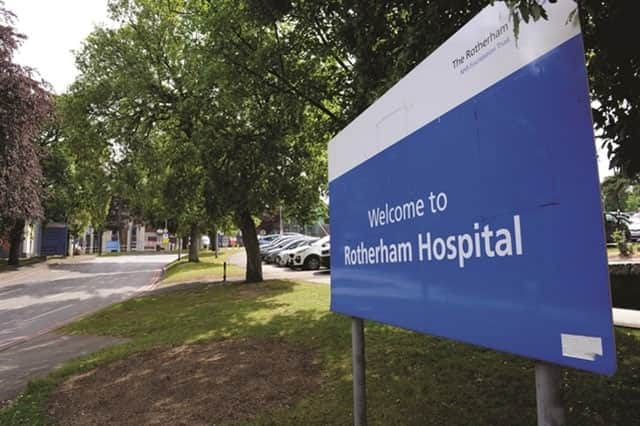Record ambulance and A&E delays shock


ROTHERHAM Hospital has reported record-breaking ambulance handover delay times, with more than 300 patients waiting outside for over an hour in a single month.
The figure, also known as “black breaches”, reached 314 in September — almost double the 169 for August, up more than 100 on the same month last year and above the previous highest-ever monthly figure of 307.
There were also ten 12-hour trolley waits in just over a week in September — after none at all since the start of the year.
This saw the hospital put on “black alert” in terms of services being under severe pressure due to the “significant challenges in bed availability”.
Figures presented to Rotherham Hospital’s board said there had been 1,267 ambulance delays of more than an hour between January and September.
Over the same time period last year, there were 788.
The proportion of patients waiting more than 12 hours in A&E from the time of their arrival also rose to 13.8 per cent, up from 11.1 per cent the previous month, and nearly double September 2021’s figure of seven per cent.
In a further sign of pressures on the hospital, Rotherham NHS Foundation Trust’s integrated performance report also found an increase in the average time patients waited in the emergency department before being seen for an initial assessment to 33 minutes — compared with 27 for the same month in 2021.
This was also a rise of eight minutes on the previous month’s 25.
Hospital chief executive Dr Richard Jenkins said demands on urgent care were “particularly challenging” during September and October, “with the trust being on OPEL level 4 for a prolonged period following the September bank holiday”.
The NHS Operations Pressure Escalation Levels system has rankings from one to four.
OPEL 4, sometimes referred to as a “black alert”, is the most severe, which NHS England classes as a “serious incident”, meaning services are under severe pressure.
In his report, Mr Jenkins said a “business continuity incident” had been declared on Tuesday, September 27 due to operational pressures, which had been “ongoing” until the following Thursday.
He added: “Within this period, the trust declared ten 12-hour trolley waits where those patients waited for more than 12 hours for a bed from their decision to admit, due to the significant challenges in bed availability and flow out of the UECC.
“Ongoing pathway improvement work to address challenges with Same Day Emergency Care and frailty pathways is important and will support flow.
“A focus on minimising delays in ambulance handovers remains a key priority.”
Sally Kilgariff, chief operating officer for The Rotherham NHS Foundation Trust, said the UECC waiting times were “higher than we would wish, as is being seen at A&E departments across the country”.
She said: “We have a comprehensive set of plans in place to improve the timeliness of care and this includes extensive preparations for winter.”
These plans include a new approach for frail older people, access to the newly redeveloped stroke unit and new acute gynaecology unit, she said.
People needing treatment should use the UECC only in an emergency and call 111 or contact a GP or pharmacist in less urgent cases.